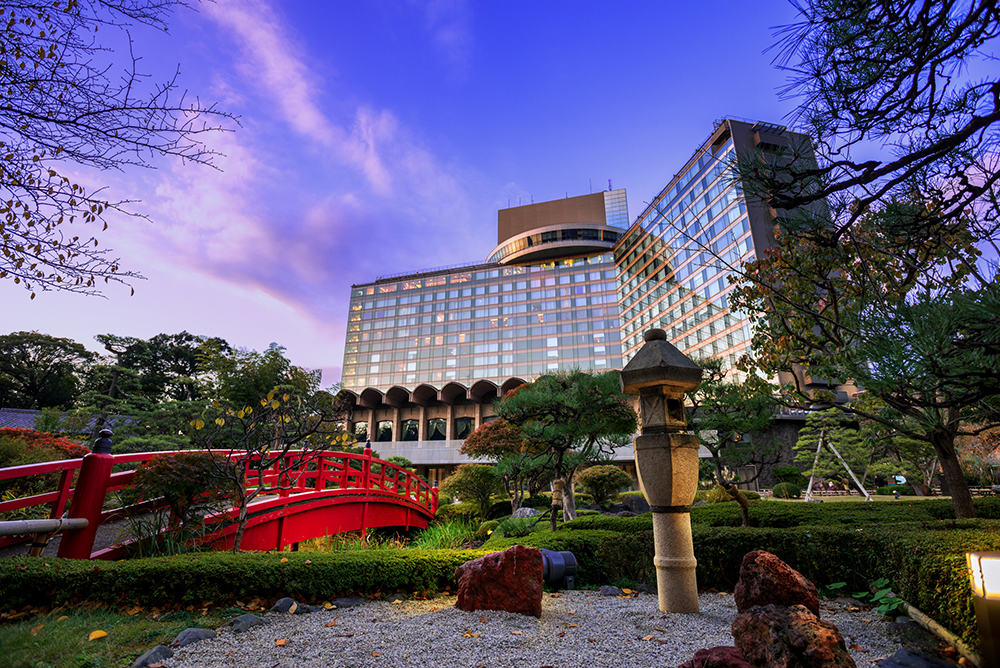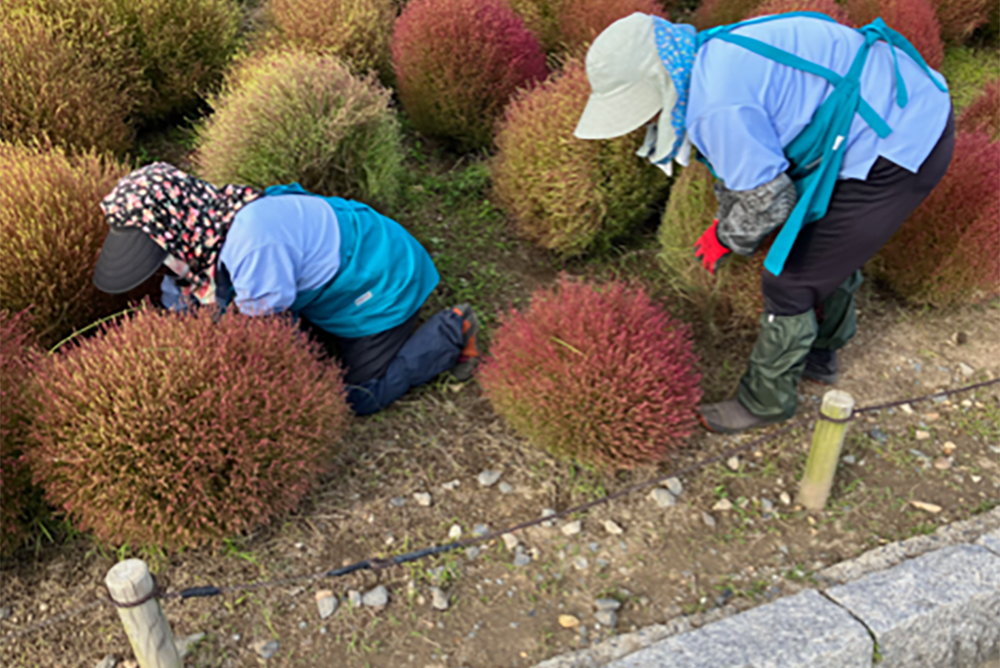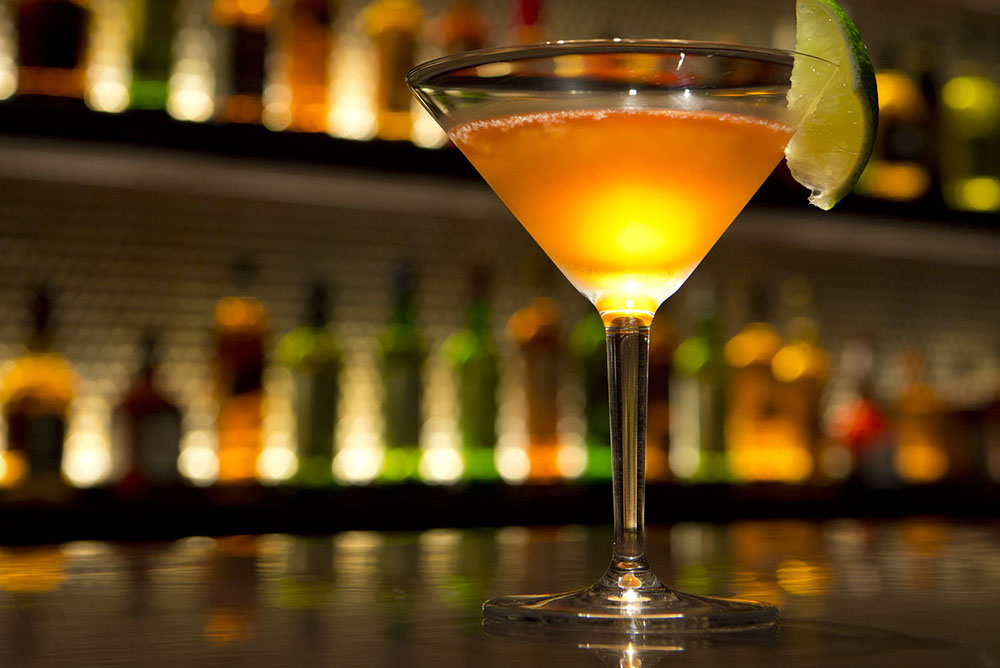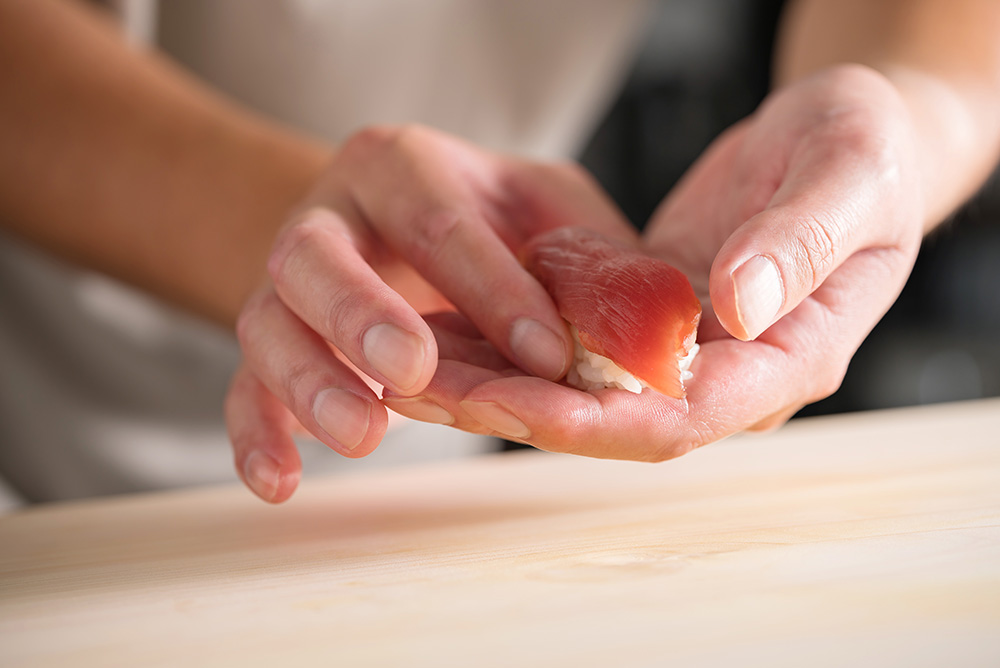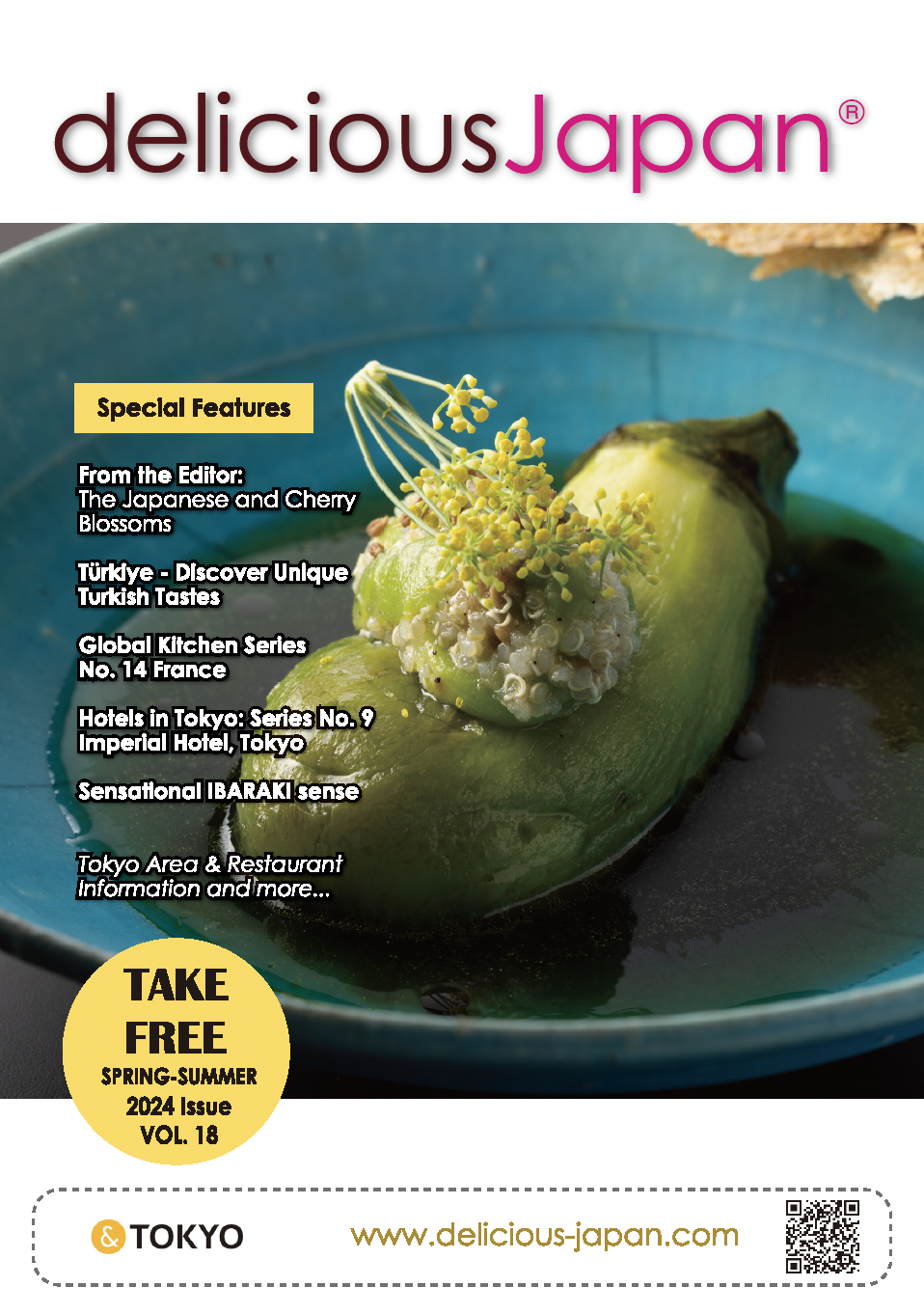
Hotel New Otani Tokyo
Executive Chef Shinsuke Nakajima oversees the cuisine of a top-class hotel that serves heads of state and dignitaries from around the world. As the "Director of Taste" at Hotel New Otani Tokyo, he supervises all the dishes in all the restaurants and banquet rooms in the hotel, working together with the head chef of each team.
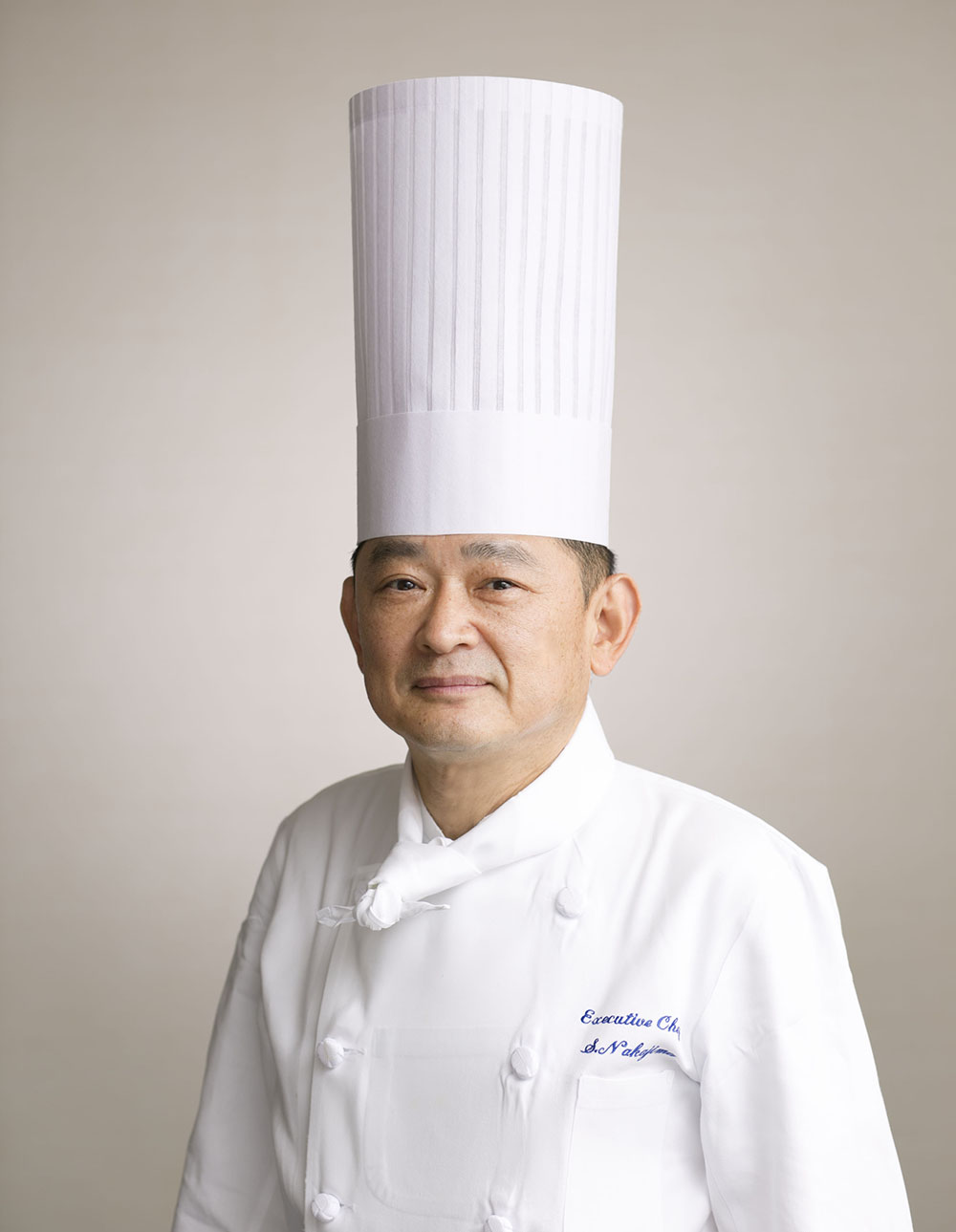
Shinsuke Nakajima
Executive Chef
Hotel New Otani Tokyo
My primary job is to find and bring the best quality ingredients to the hotel. Without good ingredients, a cook cannot produce good food. Every two months, I go on a trip to visit farms and fish ports around the country. I bring back the foods that I find, and examine the cooking methods that best suite them with the kitchen staff. This process ultimately results in the creation of new dishes that are served to our guests. In a nutshell, that is my job.
The hotel has staff specializing in Japanese, Chinese, and Western cuisines, as well as pastry chefs and bakers. I supervise a total of 300 kitchen staff. I find the best ingredients for each section and have daily discussions with the chefs on what kind of dishes we can produce out of them and what kind of dining experience our guests are seeking.
I was a judge at an international pastry competition on a panel with judges from 12 different countries. That experience deepened my understanding of what tastes good and what doesn't. I have found that foods that are common around the whole world are the ones that are the most well-received. For example, a Japanese contestant used Japanese matcha (green tea) and yuzu at the world competition, but the international judges from 11 of the 12 countries could not understand these unfamiliar tastes. It's essential to make good food out of ingredients that everyone can recognize, such as apples, strawberries, pineapples, and mangoes. My role is to ensure that all of our restaurants and banquet venues offer the kind of dishes sought by our guests, prepared and served in their best possible quality.
For example, we seek out the best fruit. Whether its strawberries, melons, or grapes, we find the ones with the best quality and make them into desserts for our guests to enjoy.
The one that stands out the most is the official dinner for the imperial ceremony of accession. We have had the experience of serving on the banquet hosted by the prime minister and his spouse for the Emperor's accession to the throne twice, and on October 23, 2019, 600 VIPs including heads of state from around the world attended. We created a menu to serve those 600 guests of honor. The Cabinet Office requested a menu that embodied our country and culture.
There were many elements to cover. The appetizers that fused Japanese, Western, and Chinese cuisines, and their presentation on the Arita porcelain plates. Whether or not to use Japanese dashi stock in the soup. How to deal with the allergies and religious requirements of the 200 out of 600 guests. Due to security reasons, the seating arrangements for the state guests were not made known until 30 minutes before the venue opened. In such an environment, that was a dinner with a series of unexpected issues about how the staff would serve the food. It was the challenge of my life, with the country's dignity at stake.
To serve good food, you need good ingredients. We place great importance on carefully examining and evaluating the ingredients. We are also committed to using these carefully selected ingredients to offer a menu that takes familiar dishes to the next level with exquisite quality. For example, my best-known work is probably the Super Shortcake, which was launched to celebrate the hotel's 40th anniversary. It was a project to discover what extent a strawberry cake can go to when a luxury hotel exerts all its efforts, and has now become an immensely popular item. Whatever it is, for example take curry and rice, we believe that the most important thing is to create a dish with enhanced quality and taste, better than anywhere else, and offer the best dining experience to our guests.
Inbound tourist demand has returned after the pandemic. How are your gearing up for the next boom?Once again, we are preparing to offer tourists the experiences of Japan's prided food culture here at our hotel. Tokyo now has 203 Michelin-starred restaurants, which is the most in the world for a single city and more than twice as many as the gastronomic capital of Paris. Tokyo is said to have the highest "dining appeal" in the overall ranking of the world's cities. The range of genres of food in Japan, as perceived by foreigners, is now expanding beyond "washoku" or traditional Japanese-style food, and "Western food" such as hamburgers and curry rice has become recognized as part of Japan's unique food culture. Therefore, we are developing a new menu lineup, "Shin-Edo Yoshoku," translated as a new style of Western dishes in Japan. We want to take this genre familiar to the Japanese and present it to the world by using carefully selected ingredients and upgrading them to an unprecedented quality.
We are also reinventing the hamburger, which was initially born in the U.S. but is now being rearranged by the Japanese in their own unique ways, such as the "tsukimi" burger that's become a standard item in the Japanese food industry. We are now in the process of developing hotel-quality burgers with elements like wagyu patties, rice-flour buns, or ones that feature unique Japanese items such as “chicken nanban” (fried chicken with tartar sauce).
The weather comes first. I select ingredients and source food with close attention to how much rain there was this year and how many hours of sunlight there were. For example, the chestnuts we use yearly are watery and have less of the chestnut's natural fluffy texture this year because of the heavy rainfall. I have already found chestnuts from another prefecture and will use them instead of the usual ones to make our iconic Mont Blanc cake. Food is weather-dependent. We have group hotels in various areas, so we exchange information among our head chefs.
Please tell us about your work developing new menus and recipes using new ingredients.For example, we are developing menus using plant-based foods such as soy meat and other alternatives to accommodate food diversity. We are in the experimental process of determining what seasonings go well with soy meat and how to combine it with other ingredients. The Tower Restaurant, a buffet restaurant on the 40th floor of the Garden Tower, offers many items featuring plant-based foods, such as pasta Bolognese and tripe stew, which are actually made with soy meat. Some people of various religions and food habits may not like the word "meat" in the first place, so we think it may be necessary to change its image, for example, by calling it "soy block."
What does "Omotenashi" mean to you?For me, good taste is hospitality. It is my responsibility as the executive chef to serve delicious food to our guests.
A good concierge is one of the essential elements of a good hotel. Concierge staff often communicate with the guests the most, and know their needs and requests first hand. We interviewed Shinobu Kojima, Chief Concierge of Hotel New Otani Tokyo, who deals with the various requests of the guests.
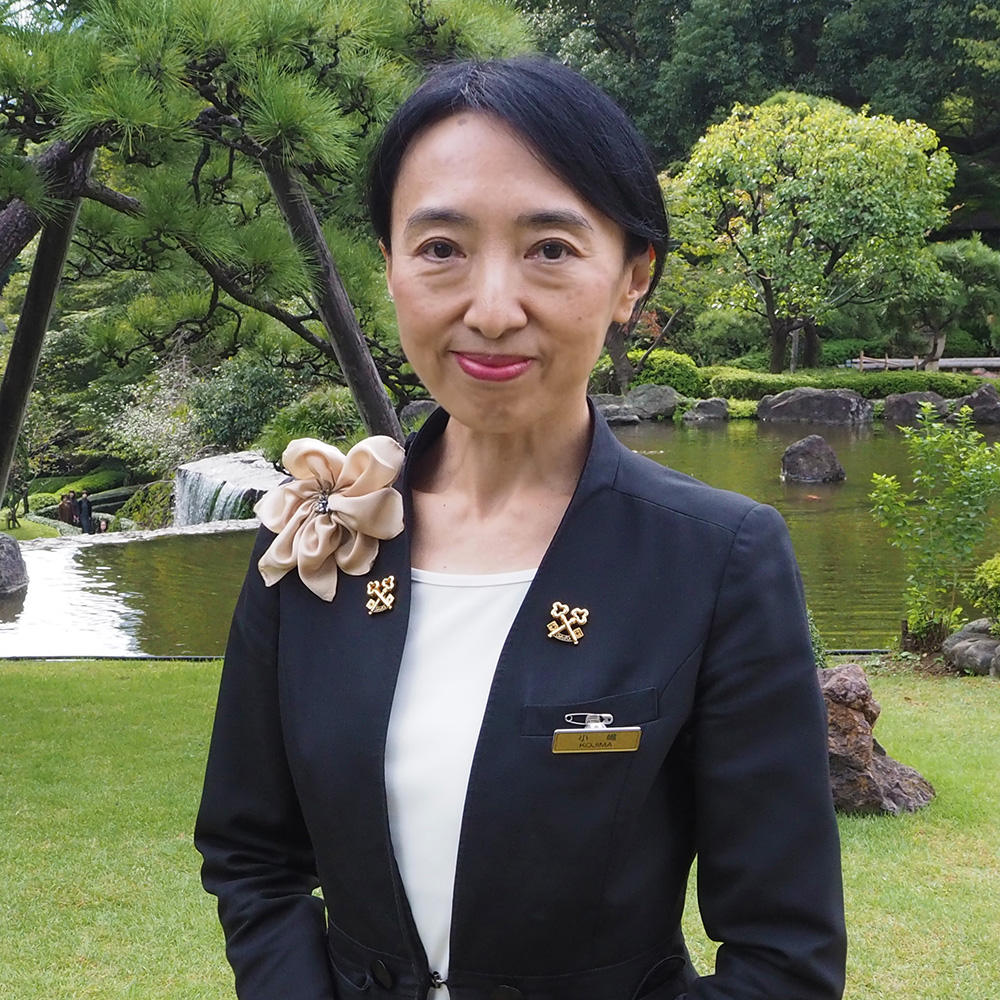
Shinobu Kojima
Chief Concierge
Hotel New Otani Tokyo
It depends on the time of year, but is usually about fifty-fifty. Among guests who stop by the concierge desk, around 70-80% are foreign visitors. Many are from Europe and the United States. We receive many inquiries about restaurants, transportation, sightseeing, and so on.
What are the biggest challenges associated with receiving foreign visitors?Many of our international guests come to Japan with high expectations for Japanese food. We are often asked to recommend restaurants outside the hotel. Still, since Hotel New Otani Tokyo has 37 restaurants of reliable quality serving various Japanese, Western, and Chinese cuisines, from Yakitori to fine French cuisine, we recommend that they try the restaurants inside the hotel first.
What do you enjoy in your daily communication with foreign guests? Also, please tell us about the rewarding moments in your work.With the resurgence of inbound tourism, international guests are returning, and we are delighted to be able to serve them face-to-face. We listen to the customer's needs and make proposals that meet them. It isn't always easy, but is extremely worthwhile, especially when the guests let us know they enjoyed what we arranged for them.
What is the number-one attraction of Hotel New Otani Tokyo mentioned by its guests?Maybe the Japanese garden, which covers approx. 10 acres. Many guests enjoy a stroll through this historic site that has been actually part of a 400-year-old daimyo mansion, first built in the early Edo period (1603–1868). It's dotted with 42 ancient stone lanterns from around that time. There is also a precious red jasper stone from Sado Island. Weighing in at 22 tons, it's the largest in Japan. The more than 350 ornamental carp in the pond are also famous, and the view of the waterfall is spectacular. The Japanese garden occupies half of the hotel grounds, and many guests return to enjoy the scenery through the seasons. In spring, as many as 19 varieties of cherry trees bloom at slightly different times, so visitors can enjoy the blossoms over a longer period than other locations. This summer, we offered handheld fireworks and paper lanterns to be enjoyed in the garden, which was well received as an opportunity to experience Japanese cultures of the season.
If you have any anecdotes of past mistakes or proud moments as a concierge, please share them with us.There’s one incident that I remember clearly. I booked a restaurant outside the hotel for a guest, and we arranged a taxi for him. I wrote down the address and gave it to the driver, but the guest contacted me later and said they could not locate the restaurant. As it turned out, the address was correct, but the entrance was a bit secluded, and they needed help to locate it. Since then, we call the restaurant directly to check how to find the place, and tell the taxi driver what to expect when heading there.
What is the most important thing to keep in mind when welcoming foreign visitors?Not many people speak Japanese, so we try to be of help when they are outside of the hotel as well. For example, we provide information on how to get on the transportation system and how to buy tickets so they can get around smoothly during their stay. Many foreigners are surprised by the number of subway and train lines in Japan and the well-developed transportation network, but it could be complicated at the same time.
There are many guests who observe a vegan, vegetarian, gluten-free diet or have other restrictions, and we need to be particularly careful in arranging restaurants for them. Even a slight miscommunication may cause a guest with an allergy to become ill, so we listen to them carefully and make every effort to recommend the right restaurants to them.
First of all, I want them to enjoy the food. We offer a variety of dining options, including Japanese, Western, Chinese, cuisines and also an extensive selection of desserts, so we hope they will have a diverse range of culinary experiences. A stroll through the Japanese garden is also recommended, where you can discover traditional Japanese aesthetics. The hotel's shopping arcade includes several shops that exhibit and offer art, antiques, and fine ceramics, so we invite our guests to stop by these outlets, even just to window-shop. And last but not least, there is an ikebana flower installment by the Sogetsu school that is the symbol of our main entrance. We hope that guests will enjoy the sublime beauty of this prided field of art in Japan.
What does "omotenashi" mean to you?Guests who visit our concierge desk are of all nationalities, and some are visiting Tokyo for the first time, while others have been here many times before. We listen to and discern each guest's needs to ensure that their stay is an enjoyable one. We cherish each encounter: every single guest is important to us, and we strive to make their experience unforgettable.
